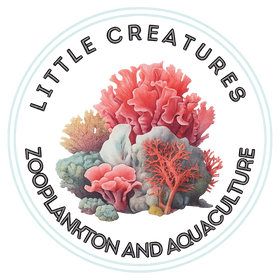By Little Creatures Zooplankton and Aquaculture
Stable alkalinity (dKH) and pH are critical for healthy copepod cultures. These parameters influence not just copepod survival, but also the growth of phytoplankton they feed on. This guide explains how to manage them efficiently and safely.
---
What’s the Goal?
Target pH: 7.8–8.4
Target dKH: 6–9 for copepods, slightly higher if culturing with heavy feeding or phytoplankton
When dKH drops, pH can swing dangerously—especially in smaller or unbuffered systems.
--
Which Buffer to Use?
Here’s a simple breakdown of the two most used compounds:
Additive Raises dKH Raises pH Use When…
Sodium Bicarbonate ✅ ❌ / neutral pH is stable but dKH needs a boost
Sodium Carbonate ✅ ✅ Both pH and dKH are low
> To raise dKH by 1.0 in 100L:
• Bicarb: 1.8g • Carbonate (Soda Ash): ~1.3g
Always dissolve in RO or culture water and dose slowly near aeration.
---
How Big Brands Compare
Most commercial "alkalinity boosters" are repackaged versions of the same ingredients:
Brand/Product Likely Ingredient(s)
BRS Soda Ash Sodium Carbonate
Red Sea Reef Foundation B Sodium Bicarbonate
Tropic Marin Alka-Balance Buffered Bicarbonate
ESV B-Ionic Alk Carbonate/Bicarb blend (proprietary)
If you're confident in testing and dosing, food-grade powders offer the same benefits for a fraction of the cost.
---
Quick Tips
Aerate well to drive off CO₂ and stabilize pH
Avoid chasing numbers—stability beats precision
Monitor more frequently in phytoplankton-heavy setups
Buffered salt mixes can prevent swings in soft RO water
---
Disclaimer
This information is provided for educational purposes. Little Creatures Zooplankton and Aquaculture is not liable for misuse or unintended consequences of DIY additives or dosing errors. Always test before adjusting, and proceed gradually.

